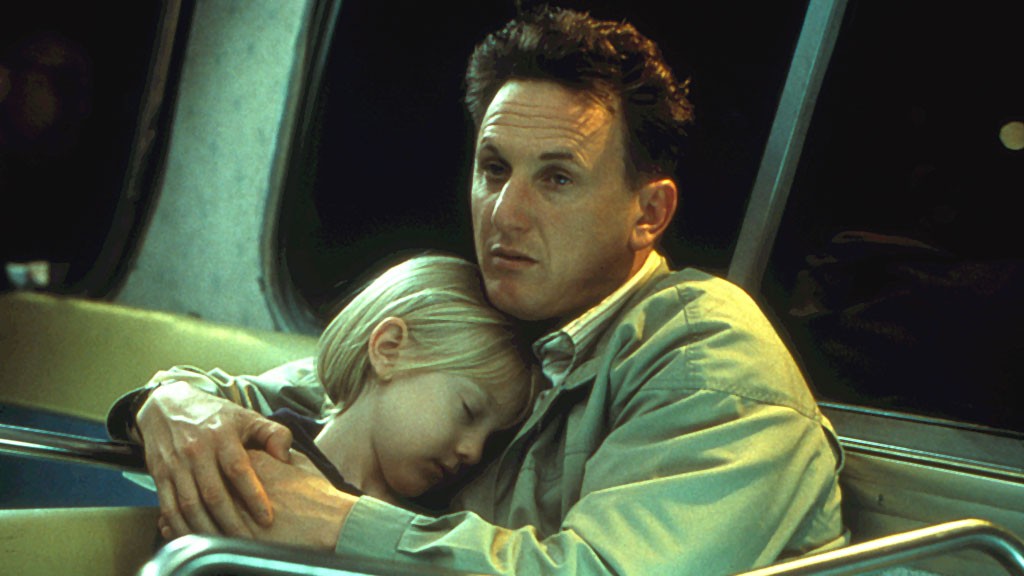
The Academy Awards. To some, it’s the gold standard by which the movie industry recognizes excellence in its own field; to others, it’s a rigged game where awards are campaigned for and only favorited insiders win. However, one thing can be agreed upon: winning an Oscar boosts a film’s profile, not only raising ticket and rental sales after a win but also allowing the film to forever be associated with this Hollywood institution.
However, aside from its history of notable snubs in the past, including Hitchcock never winning Best Director, perhaps more egregious are the many questionable choices throughout the years that have been nominated (and sometimes even winning) in the Academy’s history. Whether the quality of the film itself left much to be desired, or the acting or musical performance nominated did, here is a look at some of the worst nominations of all time.
1. In Old Arizona, Best Picture
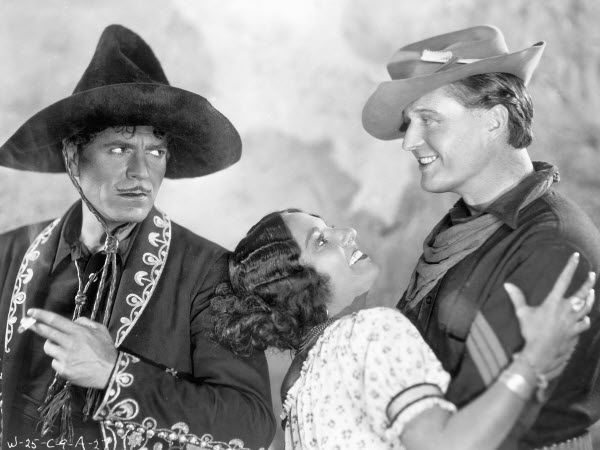
The advent of sound in motion pictures in late 1927 signaled a tidal shift in the movie business: almost overnight, lauded silent film stars that were worshipped by millions suddenly found themselves out of a job while studios scrambled to produce “talkies,” as they were being called. Since the technology for synchronized sound was in its infancy, to modern viewers many early efforts now come across as stilted affairs: stationary microphones limited actors’ movement on-screen, and the low fidelity muffled the dialogue that was recorded. However, the novelty of sound impressed audiences of the time.
Moseying into this new format was 1929’s In Old Arizona. While an innovator of sorts–it was the first Western to feature sound and was also the first film to record sound outdoors–the film itself leaves much to be desired. Following the adventures of the Cisco Kid–a charming stagecoach bandit–his unfaithful girlfriend, and the Army sergeant charged with bringing him to justice. But when the sergeant falls for the Cisco Kid’s girlfriend, complications ensue.
For starters, the acting is atrocious: every line is over-enunciated and theatrical, and the less said about the Mexican accents deployed the better. The pacing is leaden, the plot is paper-thin, and aside from its introduction of the “singing cowboy” trope, there’s no element of the film that wouldn’t have been at home in earlier silent picture.
Despite these flaws, it was nominated for five awards at the 2nd Academy Awards, held in 1930, and even winning one for Best Actor. While one could argue that there weren’t many films in competition that year, the fact was that the body of the Academy was much smaller back then, with the winners being closely associated with members of the Academy Board at the time–including charter member Mary Pickford, who also “coincidentally” won Best Actress that year.
Many great films were made in the previous two years (the awards covered two-year periods back then), but no foreign films were considered; even notable American films, such as Greta Garbo’s The Kiss and the great silent film The Wind were snubbed. Quickly forgotten in movie history (for good reason), the hokey In Old Arizona’s multiple award nominations signifies old Hollywood cronyism at its finest.
2. The Greatest Show On Earth, Best Picture
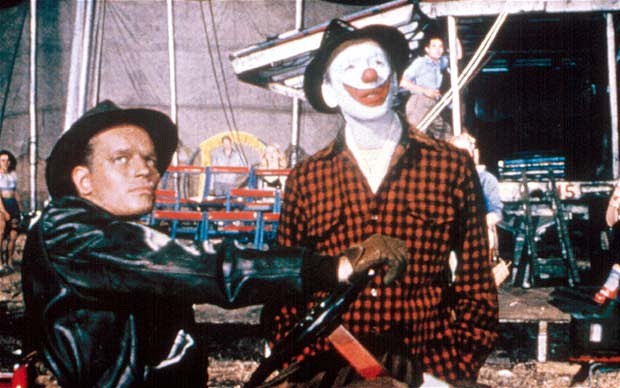
Widely recognized as the father of cinema in the United States, Cecil B. DeMille made over 70 films in his wide-ranging career, producing works across the spectrum of genres and formats along the way. Adjusted for inflation, he was perhaps the most commercially successful filmmaker of all time. Although financially successful, his films were never acclaimed for their artistry, with director William Wellman once stating, “Directorially, I think his pictures were the most horrible things I’ve ever seen in my life.”
Although not the most visually interesting director, he was a showman, as The Greatest Show On Earth (1952) could attest to: the entirety of Barnum & Bailey Circus appeared in the film, which numbered 1400 performers and hundreds of animals. The plot is a look at the behind-the-scenes complications that come from financing and organizing a large circus show, complete with a Lothario trapeze artist, the dark past of the star clown, and a crooked midway carny. Disasters ensue, only to be resolved in time for the show to go on.
A financial success upon release (as most DeMille films were), the film is a typical show-biz melodrama transposed to a circus setting. While the spectacle is interesting, there’s little else to recommend unless you’re interested in how circus shows were put together in the early 1950’s.
Despite this, it was nominated for four Oscars, and at the 25th Academy Awards, it won Best Picture. It’s widely considered one of the worst Best Picture winners of all time, particularly when compared to its competition in the category that year, including such classics as High Noon and Singin’ In The Rain.
While considered a “last chance” Academy Award for a legendary director. If only Academy voters could have seen into the not-too-distant future, when DeMille directed The Ten Commandments in 1956–his final film. Far superior to the inane The Greatest Show on Earth, it also would have served as a more fitting tribute to the man who, Moses-like, led an entire industry to the promised land.
3. Elizabeth Taylor, Best Actress, BUtterfield 8
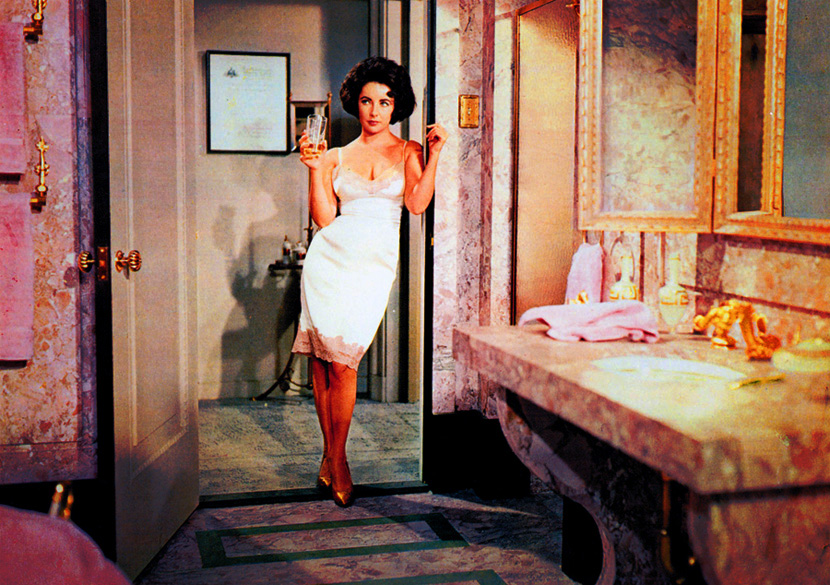
Elizabeth Taylor is a legend of the silver screen, having appeared in numerous and well-regarded films throughout her career. Finding both commercial and critical success, her work has withstood the test of time and garnered her two Academy Awards for Best Actress, including her harrowing performance as the unhinged wife who likes to play mind games with her professor husband in Who’s Afraid of Virginia Woolf? Her first Oscar win occurred several years earlier and remains one of the most dubious nominations in the Academy’s history.
BUtterfield 8 (that’s not a typo; that’s the title of the film as it appears, a reference to old telephone exchange names of the time) is a sordid piece of work that follows the misadventures of a promiscuous woman (Taylor) and her disastrous affair with a married man.
A controversial film at the time of its release, in hindsight it’s also an objectively terrible movie: save for Taylor’s intense performance, it’s poorly written, adapted from a potboiler pulp novel from the 1930’s, and much of the film’s content (including the disturbing revelation by Taylor’s character that she was raped multiple times when she was an adolescent and enjoyed it) would shock audiences today for entirely different reasons. It is also the only Elizabeth Taylor movie where you can hear her declare, “Mama, face it: I was the slut of all time!”
Taylor was one of the biggest movie stars in the world at the time of its release, and the film was MGM’s biggest financial success of the year. She was nominated for Best Actress for the 33rd Academy Awards. Just weeks before the awards ceremony, Taylor fell ill while in Europe with pneumonia and underwent emergency tracheotomy surgery. With widespread reports that the actress was close to death, a swell of support among Academy voters for her nomination resulted in her Oscar win in April when the awards were presented that year.
Later calling her win a “sympathy award,” she openly disparaged her performance in BUtterfield 8 and revealed that she only made it on the condition that she would be released from her three-picture contract with MGM. Shirley McClaine–who was nominated that year against Taylor for her superior performance in the Best Picture winner The Apartment–quipped after Taylor’s win, “I lost to a tracheotomy!” With hindsight being 20/20, it’s clear that her nomination–much less her win–was a weak choice by Academy members that year.
4. Doctor Dolittle, Best Picture
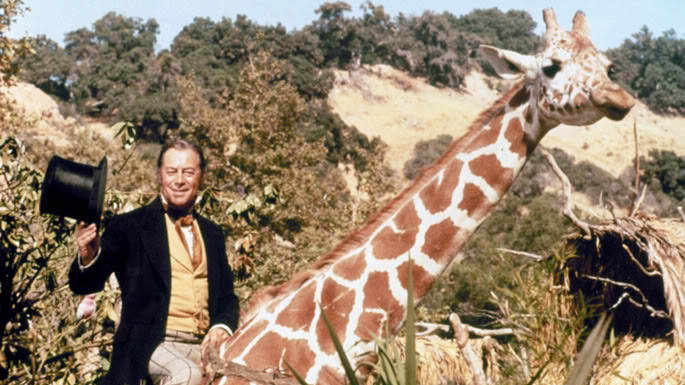
For the Best Picture Academy Award, the category is often populated by social dramas and period pieces. The 40th Academy Awards, held in 1968, was no exception: of the five nominees, three fell into the former group (The Graduate, Guess Who’s Coming To Dinner, and In The Heat of The Night), with one in the latter (Bonnie and Clyde). However, an outlier managed to nab a nomination–not for its quality or even success, but because of the intense lobbying by the studio on the film’s behalf. That film was Doctor Dolittle, the 1967 musical and box office bomb starring Rex Harrison, a man not known for his singing talent.
In an attempt to recreate the success of 1964’s My Fair Lady–for which Harrison won Best Actor at the 37th Academy Awards–20th Century Fox was eager to make another musical with him. An adaptation of Hugh Lofting’s classic Doctor Dolittle children’s stories was decided upon with Harrison as the titular character, a physician who can talk to animals.
What started as a straightforward musical with a $6 million budget soon became a protracted nightmare: Harrison clashed with his co-stars; the numerous live animals used for the film caused all sorts of havoc on-set; the production was sued for millions by a former producer who had worked in early development of the film; tropical shooting locations were plagued by stormy weather and angry locals; even a giraffe died on set. As a result, the budget ballooned to $17 million and took over four years to complete.
The result was a long, plodding musical that might have fared better were it not released the same week as Disney’s The Jungle Book. Instead, family audiences flocked to see the upbeat animated musical featuring talking animals while the movie about the man who could talk to animals sank at the box office. Now in financial straits due to its massive budget (adjusted for inflation it would have cost $50 million today), 20th Century Fox doubled down by throwing good money after bad: when their massive marketing and merchandising campaign failed to arouse audience interest, they turned to the Academy Awards in hopes of garnering acclaim for their flailing musical.
Campaigning heavily for nominations, the studio appealed to members of the Academy, whom they showered with gifts and expensive dinners while not-so-subtly hinting at their desire for the film to be nominated in as many categories as possible. This soft bribery worked to an extent: Doctor Dolittle was nominated for a whopping 10 Academy Awards, mostly in technical and music categories.
However, most shocking, it also garnered a Best Picture nomination. Considering the revolutionary films that it shared company with in this category, it could be seen as a last gasp of the “Old Hollywood” system; in fact, the full story of these five Best Picture nominees is recounted in Mark Harris’s excellent film history book, Pictures at a Revolution: Five Movies and the Birth of the New Hollywood.
While it won three awards that night, Best Picture was not one of them; that honor went to Norman Jewison’s In The Heat of the Night, a searing look at race relations in the American South. Meanwhile, 20th Century Fox barely pulled out of its financial nosedive, Harrison’s career never truly recovered from the bruising it took at this high-profile flop, and Doctor Dolittle is now mostly remembered as one of the worst films to ever garner a nomination for Best Picture.
5. “I Just Called to Say I Love You,” Best Song
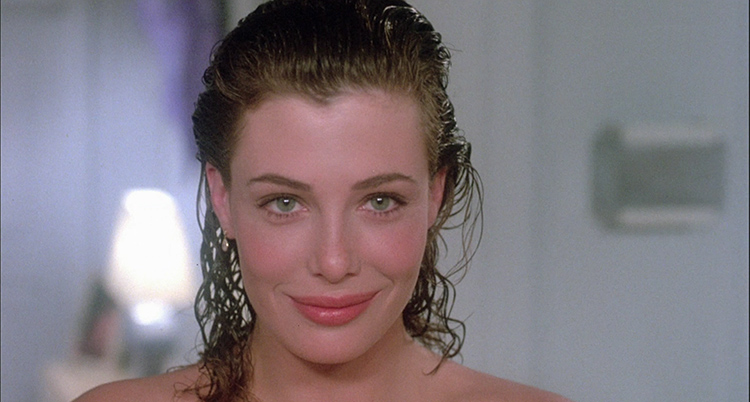
Music, like many forms of art, is subjective: one man’s Mozart is another man’s Falco. There’s no accounting for taste or any objective measuring stick with which we can quantify the merits of music or its appeal. That said, Stevie Wonder–the genius who forged such timeless albums as Songs In the Key of Life and Innervision–has written far, far better songs than 1984’s sappy and simplistic “I Just Called to Say I Love You.”
Featured in the Gene Wilder comedy The Woman in Red, the song was a massive hit for Wonder, reaching number one in 17 countries and ultimately selling over four million copies worldwide. That it won multiple Grammys isn’t surprising; after all, part of that awards’ drive comes from recognizing success in the commercial field. What is surprising was that it was nominated for–and won–an Academy Award.
Wonder wrote the score to The Women in Red and apparently dusted off a song he originally wrote in 1978 to included in the score, where it was featured in the film. While Wilder’s comedy about a married man who becomes infatuated with a woman (in red) that he sees on the street only received tepid reviews and earned a modest box office, the song was a smash hit and became more well-known than the film of its origin.
Featuring a Casio-sounding drum machine, cheesy synth strings, and set to a lazy 2/4 ballad beat, it’s a gratingly simple song from the same innovator who played once nearly every instrument on his musically complex and landmark double album Songs In the Key of Life.
The massive success of “I Just Called…” didn’t pass by the notice of members of the Academy, who nominated it for Best Original Song for the 57th Academy Awards. And maybe its eventual win wouldn’t seem so surprising either, had it not been for some of the other songs nominated in that category that year.
Among his competition were “Against All Odds (Take A Look At Me Now)” by Phil Collins, Kenny Loggins’ toe-tapping “Footloose,” and Ray Parker Jr’s classic “Ghostbusters.” While music is subjective, and tastes and styles change, surely any one of these songs were just slightly more deserving of the Oscar that year than a lukewarm ballad shambled together by a music legend.